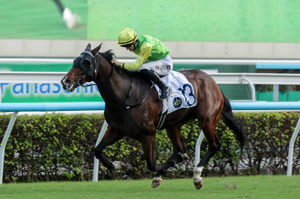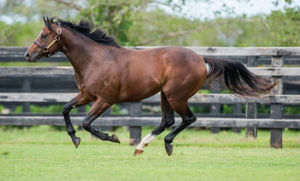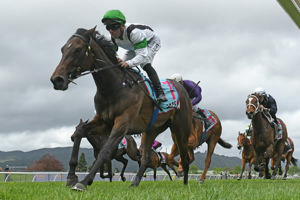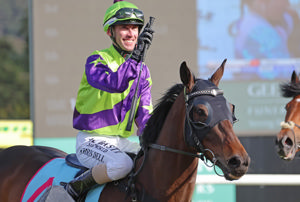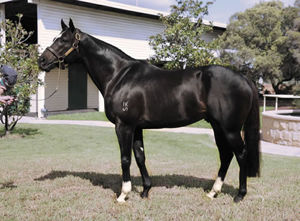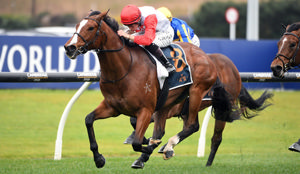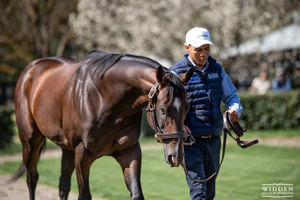Getting the best results from valuable breeding stock is a topic that interests everyone.
“After consultation with our vets Cambridge Equine Hospital and, in particular, Dr. Robert Hitchcock, we decided to install Equilume lighting in our new stallion barn, built during 2019. Dr. Hitchcock said the results of testing from the Equilume lighting systems had been very positive and we had four stallions under these lights last year. We were very pleased with the returns from all stallions, but particularly our French shuttle stallion Almanzor and first season sire Embellish, both of whom covered books in excess of 140 mares and achieved pregnancy rates in the low 90’s after all testing was complete.”
Henry Plumptre, CEO, Cambridge Stud, NZ
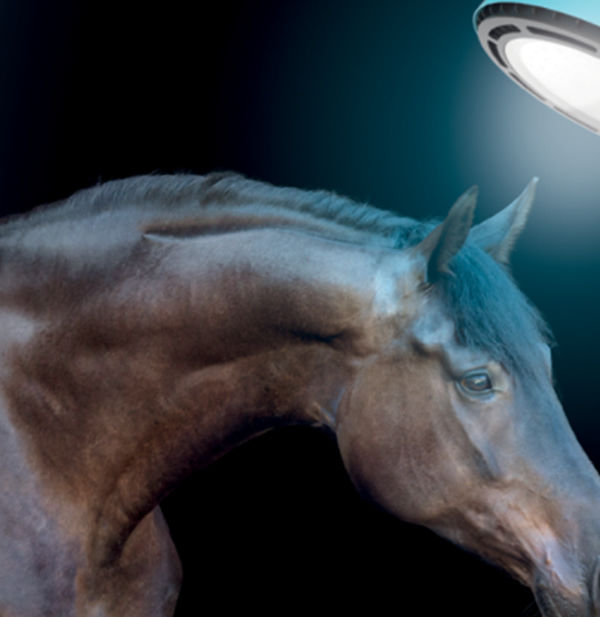
Horses are long-day seasonal breeders, with reproductive activity coinciding with the long days of spring and summer, while the non-breeding season is associated with the shorter days of autumn and winter.
This circannual (yearly) rhythm ensures that after an 11-month gestation period, environmental conditions such as temperature and grass growth are optimal for foals to thrive.
While stallions, unlike mares, are capable of breeding all year round, there are significant improvements in reproductive performance associated with the spring and summer months.
Light Signals Stimulate Reproductive Activity
Nature conveys the signal for the breeding season to start through the gradual increases in day length in spring. Daylight synchronizes the horse’s ‘internal clock’ – a complex control system that coordinates all physiological functions to a 24-hour (circadian) or 365-day (circannual) rhythm. Light suppresses the production of melatonin, a hormone also known as the hormone of darkness, which in turn regulates the release of hormones involved in reproduction and fertility.
As days get longer, a reduction in melatonin is associated with a rise in testosterone levels in stallions. Similar hormonal changes in response to daylength occur in mares, which makes the daily duration of light key to getting the breeding season underway.
As day length shortens in the autumn and the duration of melatonin production increases, reproductive activity in both stallions and mares is suppressed and they enter the non-breeding season.
Advancing & Extending the Season of Optimum Fertility for Stallions
Exposing mares and stallions to longer hours of light during winter advances the perceived timing of spring and therefore the onset of reproductive activity. However, it is not only the duration of light exposure but also the quality and consistency of light and the elimination of white light pollution at night that matters. Natural light has a high amount of blue wavelength light. In contrast, ordinary indoor lighting has a high proportion of red wavelength light.
By providing the optimal light spectrum and duration, incorporating biological effective blue light, EquilumePerformance Lighting advances and extends the season of optimum fertility for stallions, in addition to many other health benefits.
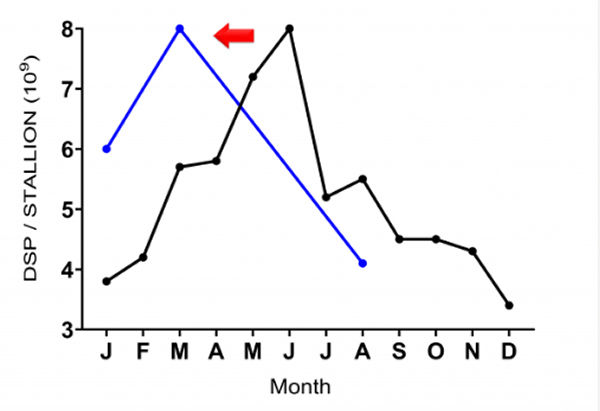
Scientifically Proven Results
Levels of the hormone testosterone are an indicator of stallion fertility and libido. A study evaluating the effect of optimum lighting on testosterone levels in 24 Sport Horse stallions was conducted over a six-month period at a stud in Germany. Beginning in late autumn, 12 stallions were maintained under the Equilume Stable Light ‘Long Day’ lighting programme (Group 1) which provided 17.5 hours of blue-enriched polychromatic LED light daily, gradual transitions at dawn and dusk and red light at night.
The remaining 12 stallions were maintained under approx. 12 hours of light using standard LED lights (Group 2). Blood samples were taken at the beginning of Dec, Jan, Feb, Mar and Apr. Statistical analysis revealed a significant effect (P<0.05) of light treatment on testosterone levels.
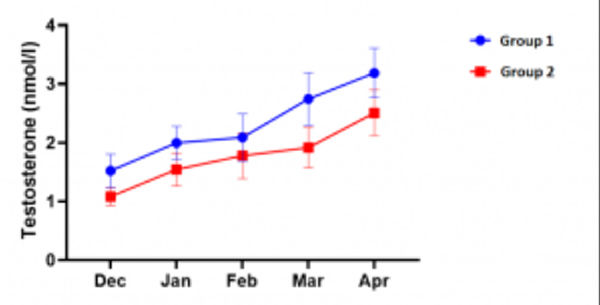
Stallions under the Equilume Stable Lights (Group 1) had consistently higher testosterone levels than stallions under standard LED lights (Group 2). Staff at the yard also reported shorter, sleeker coats in the stallions under the Equilume Stable Lights.
Additional Benefits to Stallions
Equilume Performance Lighting regulates the daily (circadian) and seasonal (circannual) rhythms in
behavior, reproduction, coat condition and performance. In addition, blue-enriched light boosts activity, metabolism, alertness and appetite and acts as a natural air sanitizer by reducing growth of microbes. The benefits of Equilume Performance Lighting include the following:
Health
Strengthening their immune system
Enhancing alertness and mood
Accelerating wound healing
Performance
Increases in muscle mass
Advancing and extending the season of peak performance
Improving appetite
Improving top-line
Coat Condition
Accelerating winter shedding
Maintaining coat condition
Reducing or eliminates clipping
For more information about Equilume lighting solutions check out the Equilume Stable Light and the Equilume Light Mask.

